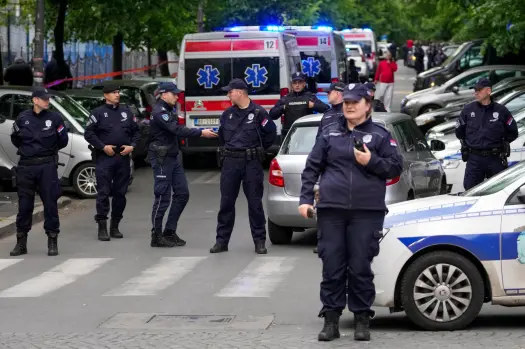This morning, Graz, Austria, school shooting stunned the country as a former pupil opened fire at BORG Dreierschützengasse. Early reports confirm that at least 10 people have died, including the shooter, and around 30 more were wounded – making this the deadliest school attack in Austria’s post‑war history. The event unfolded swiftly just after 10 a.m. local time, prompting a massive emergency response that has left Graz and all of Austria grappling for answers.
What happened in Graz, Austria, school shooting?
Shortly after 10 a.m. CEST, gunfire erupted in two classrooms at BORG Dreierschützengasse, a secondary school serving students aged 14 and up. The assailant, a 21 or 22‑year‑old former student, gained entry with a legal pistol and shotgun. He targeted his former classrooms, apparently motivated by years of bullying, before ending his own life in a bathroom. Police found his body on scene. Authorities evacuated the school and brought in special forces and medical teams – including helicopters and crisis response units – to secure the area and assist victims.
Victims, injuries and casualty breakdown
- Fatalities: At least 10 people, including the shooter. The victims include seven to eight students and at least one adult, likely a teacher or staff member.
- Injuries: Approximately 30 individuals were hurt, with several in serious or critical condition. Many were rushed to multiple hospitals across Graz.
- Injured profile: The wounded include both students and teachers. Trauma teams and psychological counselors are being deployed to support survivors and families.
The shooter and possible motives
Police confirmed the shooter was a former student, aged 21–22, who did not complete his schooling at BORG. He legally owned the firearms used in the attack. Austrian media and local officials indicate that he had been a victim of long‑term bullying, possibly influencing his actions. Authorities continue to investigate the full extent of any motive, but preliminary evidence supports the bullying narrative.
Emergency response and official reactions
- Law enforcement quickly established a perimeter, evacuated the school, and declared the scene safe by 11:30 a.m.
- Interior Minister Karner confirmed the attacker died by suicide using the pistol and shotgun.
- Chancellor Christian Stocker declared this a “national tragedy” and announced three days of mourning, marking the first such decree since the 2020 Vienna attack.
- Graz Mayor Elke Kahr described the incident as “a terrible tragedy” while visiting local hospitals and the scene.
- European leaders, including EU and Commission heads, expressed solidarity, urging a reassessment of school safety and gun controls.
Context: Why this matters in Austria
Gun violence is rare in Austria despite civilian firearm ownership levels among Europe’s highest at approx. 30 guns per 100 people. Mass shootings are exceptionally uncommon. This tragedy, devastating as a human catastrophe, also confronts the nation’s sense of security. Students view schools as safe havens, and today that sanctuary was violently shattered.
Prior incidents—like the 2020 Vienna shooting—have prompted debate on gun laws, but the legal ownership status of this shooter introduces fresh urgency. Critical questions lie ahead: Did unvetted private firearm sales contribute? Are current license protocols and mental health screenings sufficient? The public and political spheres are now demanding answers.
Community grief and ongoing support
In the hours after the attack:
- The police designated the ASKO stadium as a reunion point for parents and loved ones.
- Crisis counseling teams and trauma outreach units are working to help victims, families, and classmates.
- The school will remain closed for the rest of the week to allow space for mourning and healing.
- Local and national memorial services will be held, with flags lowered to half‑staff across Austria.
- National mourning will include moments of silence, communal reflection, and calls for unity.
What’s coming next
Here is what to watch in the coming days:
| Task | Purpose |
|---|---|
| Ongoing investigation | Authorities will probe the shooter’s history, motives, and how he legally obtained weapons. |
| School safety review | Scrutiny will fall on access control, crisis preparedness, and existing protection measures. |
| Gun policy debate | With legal ownership, pressure mounts to tighten background checks and private sale regulations. |
| Support services | Extended mental health and community support will be vital to recovery for those affected. |
The lasting impact of the Graz, Austria, school shooting
This tragedy has left deep scars.
- Families face unbearable loss and trauma.
- Students and educators are asking: how safe is school?
- Austria as a whole is confronting a rare and painful rupture in its national psyche.
While grief pervades, this moment can also be one of national reckoning. With leadership promising change, lessons learned now may prevent future tragedies.
Final reflections
The Graz, Austria, school shooting has pivoted from shock to collective action. Honoring victims means not only mourning but challenging the systems that failed them. Now is the time for concrete improvements—tighter gun controls, better mental‑health screening, more robust school safety protocols.
The road to recovery will be long. But the resilience of Graz and the unity of all Austrians born from this shared grief may also bring meaningful change. In times like this, unity and resolve are the most powerful responses.
Take a moment to check in with others today. Share a kind word, offer support, and hold your community close. Because in moments of darkness, compassion and solidarity can light the path forward.
